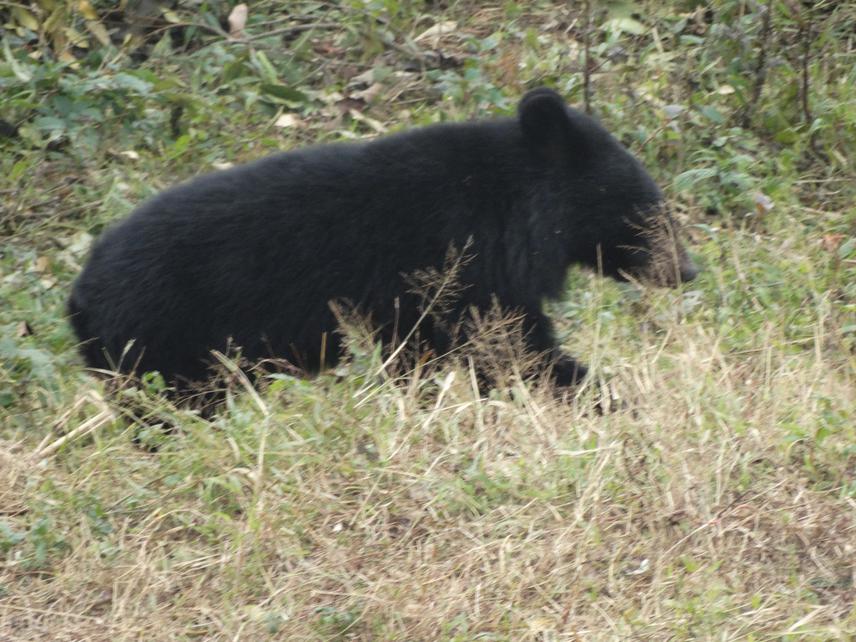Rakesh Basnett
There have been no detailed studied on ecology and human-black bear conflict in the region, particularly in KNP, Sikkim to get an in-depth understanding of the causes leading to escalated conflicts in the area. Only when there is a systematic understanding of the causal factors of conflict, it would be possible to manage problems as this where interests of both the species and the human community are addressed to mitigate the conflict.
Firstly, the aims of this to find out the distribution, habitat status and structure of the Asiatic black in KNP. Secondly, to understand key components to determine whether agricultural crops composed a part of the diet of black bears or not and compression between forest diet and agricultural diet through scat analysis and Lastly, is to create the better mitigation and conservation strategies to the villagers, Stakeholders, policymakers, forest department as well for protecting and conserving the fate of Asiatic black bear.

Asiatic Black Bear. © Rakesh Basnett.
Asiatic black bear (Ursus thibetanus) is one of the four bear species found in India. This species is facing considerable stress in the wild from constant loss of habitat and also from regular poaching to ful fill the demand for its body parts for use in medicinal practices. Asiatic black bears have shown signs of decline over the years and this has led IUCN to include this species under the globally vulnerable species category. CITES include it in Appendix I since 1979 and is included in Schedule I of Indian Wildlife (Protection) Act 1972. Now days black bear-human conflicts is an important management issue that needs to be addressed on priority basis as depredation of agricultural/ horticultural produce and livestock by black bears have resulted in the resentment of the local people who suffer such losses leading to retaliatory killings.
The project here aims to look into these socio-ecological factors leading to the conflict of Asiatic black bear with humans with an aim to generate adequate information required for effective mitigation measures in the KNP and its buffer areas. The study is one of the first kind of study that will serve the purpose for better understanding of ecology and human- black bear conflict within the Sikkim especially referring to Khangchendzonga National Park and its buffer areas. It will provide the mitigation and conservation strategies to the policymakers, Govt. forest department as well for protecting and conserving the fate of Asiatic black bear as a whole.